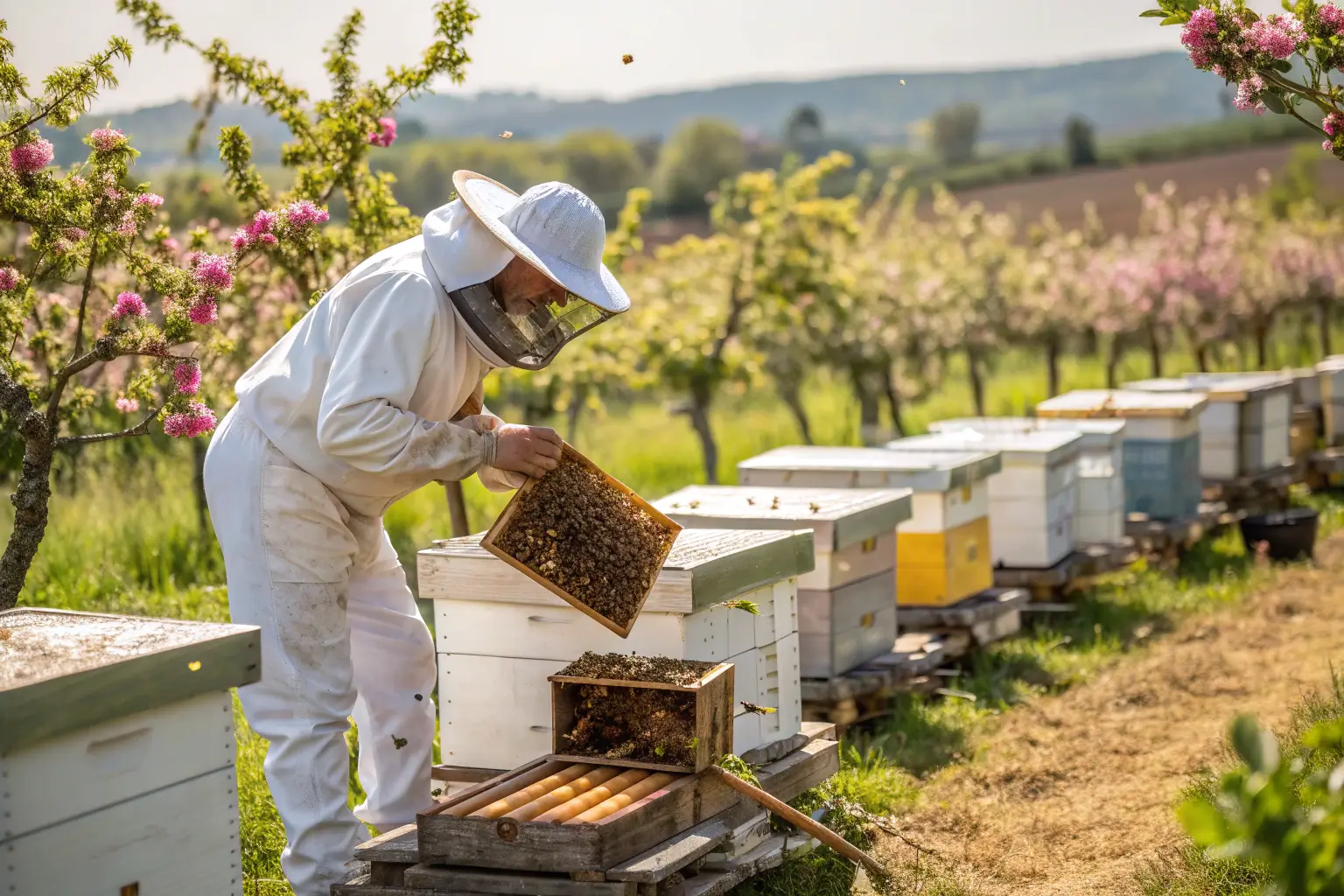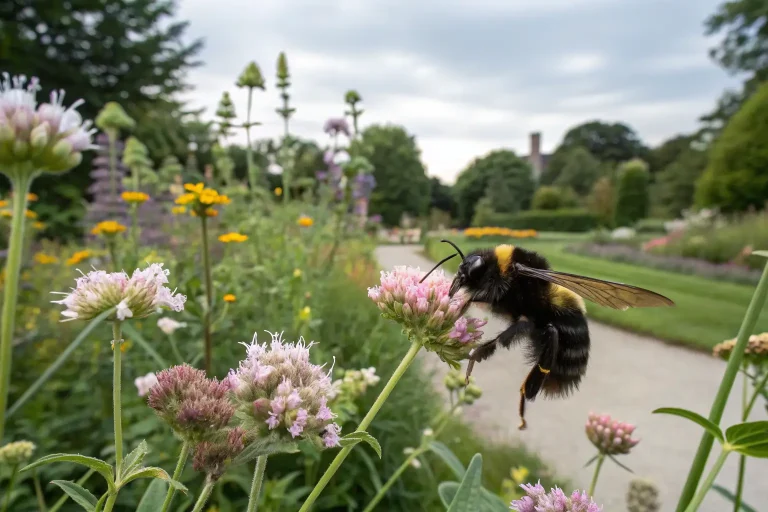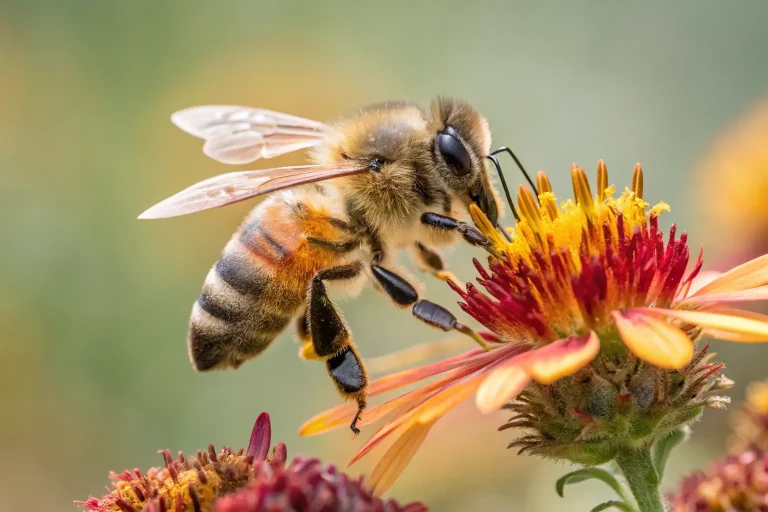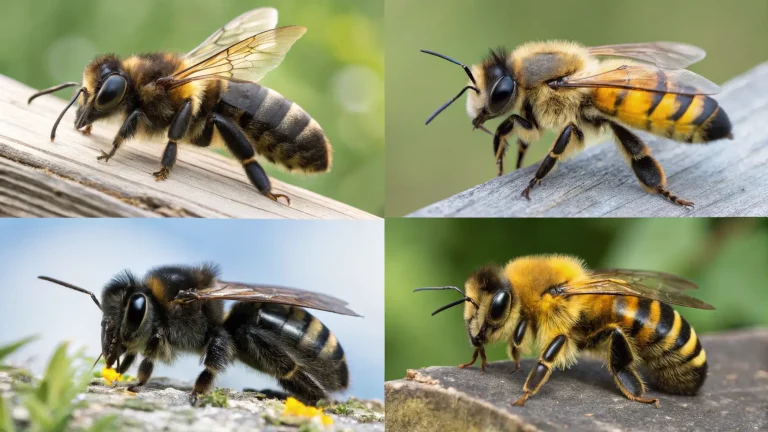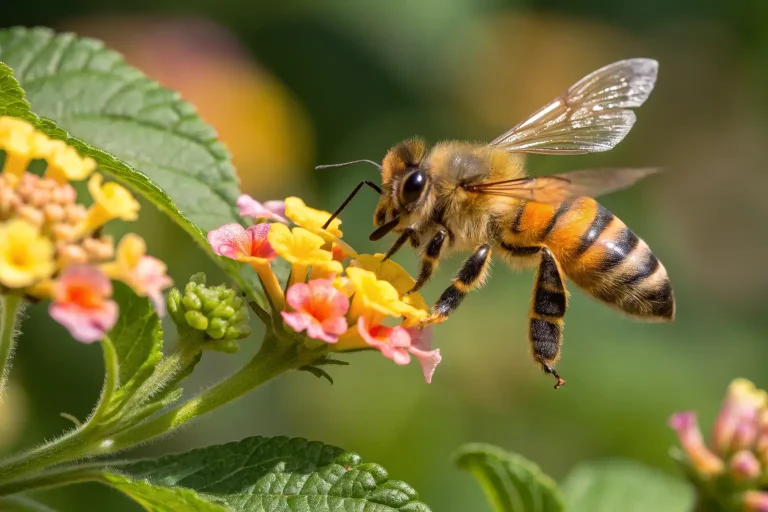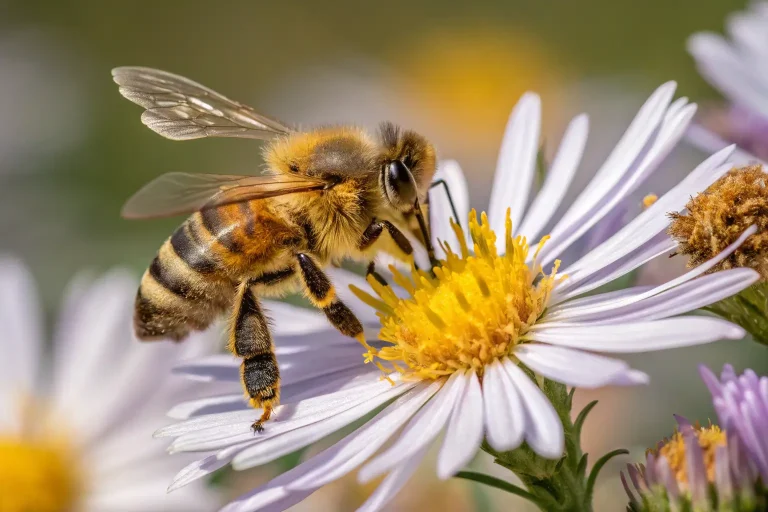How to Start a Honeybee Farm: 7 Essential Tips for Beginners
Are you dreaming of starting your own honeybee farm but don’t know where to begin? Beekeeping is both an art and science that rewards patience with liquid gold. This comprehensive guide offers seven essential tips to help aspiring beekeepers establish a thriving honeybee farm. Whether you’re looking to produce honey, support local pollination, or simply connect with nature, these foundational steps will set you on the path to successful beekeeping.
Introduction
Honeybees (Apis mellifera) are remarkable creatures that have fascinated humans for thousands of years. These industrious insects not only produce the sweet nectar we call honey but also play a crucial role in pollinating approximately 80% of flowering plants, including many of our food crops. Starting a honeybee farm isn’t just a rewarding hobby—it’s a meaningful contribution to local ecosystems and agricultural sustainability.
The art of beekeeping dates back at least 9,000 years, with evidence of honey harvesting appearing in ancient cave paintings. Today, with declining global bee populations due to pesticides, habitat loss, and climate change, establishing your own honeybee farm has never been more important.
Did you know? A single worker bee produces only about 1/12 of a teaspoon of honey in her entire lifetime, yet a strong colony can collectively produce 60-100 pounds of honey annually. This remarkable efficiency demonstrates why honeybee farming is both fascinating and potentially profitable for beginners willing to learn.
Species Overview
Scientific Name
Honeybees belong to the genus Apis, with the Western or European honeybee (Apis mellifera) being the most commonly kept species in honeybee farms worldwide. They belong to the family Apidae within the order Hymenoptera, which includes bees, wasps, and ants.
Physical Characteristics
Honeybees are four-winged insects with segmented bodies divided into three distinct parts: head, thorax, and abdomen. Workers measure approximately 15mm in length, while queens are noticeably larger at about 20mm. Their bodies range in color from golden brown to nearly black, often with distinctive striping patterns.
A honeybee colony contains three types of bees:
- Queen: The reproductive female and mother of all bees in the hive
- Workers: Infertile females that perform all colony maintenance tasks
- Drones: Males whose primary purpose is mating with queens
Subspecies
Several subspecies of Apis mellifera are popular among honeybee farmers, each with distinct characteristics:
- Italian bees (A. mellifera ligustica): Gentle, productive, and disease-resistant; ideal for beginners
- Carniolan bees (A. mellifera carnica): Excellent foragers with strong winter survival rates
- Caucasian bees (A. mellifera caucasica): Known for producing large amounts of propolis
- Buckfast bees: A human-bred hybrid known for disease resistance and productivity
When planning your honeybee farm, selecting the right subspecies for your climate and beekeeping goals is crucial for success.
Habitat and Distribution
Natural Habitat
In the wild, honeybees establish colonies in protected cavities such as hollow trees, rock crevices, or man-made structures. Within these spaces, they build intricate wax combs for brood rearing and honey storage. On a honeybee farm, beekeepers provide artificial hives that mimic these natural conditions while allowing for management and honey harvesting.
Geographic Range
Honeybees are incredibly adaptable and now inhabit every continent except Antarctica. Originally native to Europe, Africa, and parts of Asia, they’ve been introduced worldwide for honey production and crop pollination. This adaptability means you can establish a successful honeybee farm in most regions with flowering plants and moderate climates.
Adaptations
Honeybees have evolved remarkable adaptations that make them exceptional at collecting nectar and pollen:
- Specialized body hairs that capture pollen
- A proboscis (tongue) designed for extracting nectar
- Pollen baskets on their hind legs
- The ability to communicate food sources through the famous “waggle dance”
These adaptations allow honeybees to be highly efficient pollinators and honey producers—the very qualities that make honeybee farming viable and rewarding.
Tip 1: Education and Research Before Starting Your Honeybee Farm
Before acquiring your first bees, invest time in beekeeping education. Understanding honeybee biology, behavior, and management techniques is essential for maintaining a healthy honeybee farm.
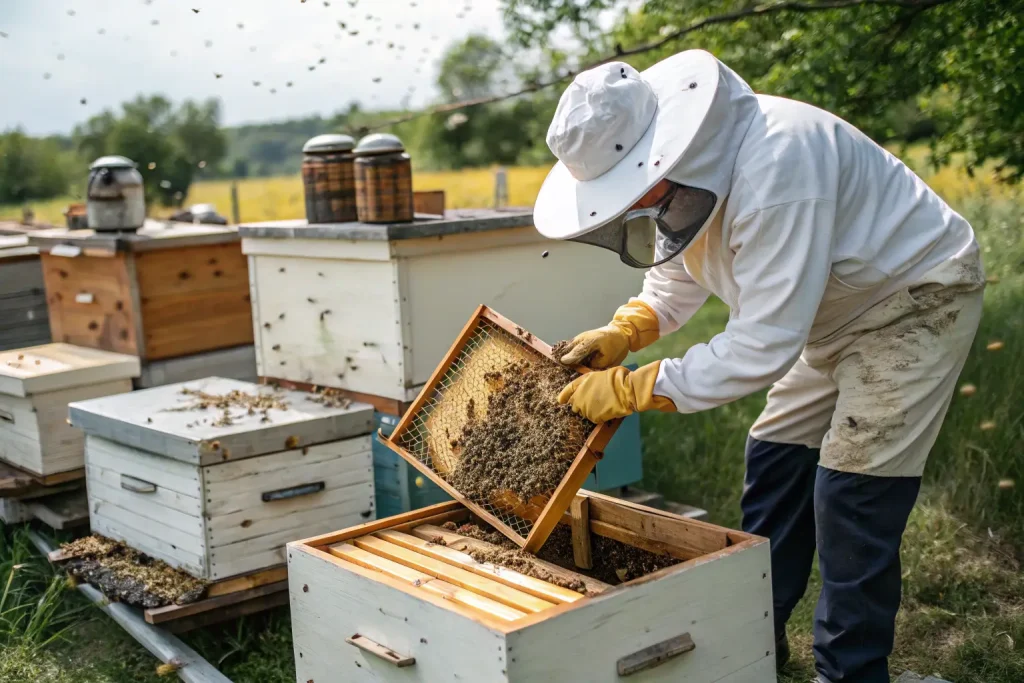
Learning Resources for Beginning Beekeepers:
Join a local beekeeping association: Most regions have beekeeping clubs where you can learn from experienced beekeepers. These organizations often offer mentorship programs, workshops, and equipment-sharing opportunities.
Take a beekeeping course: Many universities, agricultural extension offices, and beekeeping suppliers offer beginner courses. Online options have expanded dramatically in recent years.
Read foundational texts: Books like “Beekeeping For Dummies,” “The Backyard Beekeeper,” and “The Beekeeper’s Handbook” provide comprehensive information for new honeybee farmers.
Follow reputable beekeeping websites and forums: Sites like Beesource.com and the American Beekeeping Federation offer valuable resources and community support.
Understanding the annual beekeeping cycle is particularly important when planning your honeybee farm. Each season requires different management techniques, from spring buildup to winter preparation.
Tip 2: Select the Ideal Location for Your Hives
The success of your honeybee farm depends significantly on hive placement. Bees need adequate forage, protection from extreme elements, and positioning that’s convenient for your management.
Optimal Hive Placement Considerations:
Sun exposure: In cooler climates, place hives where they receive morning sun to encourage early activity. In hot regions, afternoon shade prevents overheating.
Wind protection: Strong winds force bees to expend extra energy. Position hives behind windbreaks like shrubs, fences, or buildings.
Water source: Bees need water for cooling the hive and diluting honey. Provide a water source within 1/4 mile or they may visit neighbors’ pools or birdbaths.
Accessibility: Ensure you can easily approach hives with equipment during inspections and honey harvests.
Entrance direction: South or southeast-facing entrances encourage earlier morning activity in cold climates.
Space between hives: Allow at least 2-3 feet between hives to prevent drift (bees entering the wrong hive).
Remember that honeybees typically forage within a 3-mile radius of their hive, so diversity of flowering plants within this range is important for honey production and colony health.
Tip 3: Gather Essential Equipment and Supplies
Starting a honeybee farm requires specific equipment. While beekeeping can be scaled to various budgets, certain items are essential for proper colony management and beekeeper safety.
Basic Equipment for New Beekeepers:
Protective gear: At minimum, a veil to protect your face. Full suits provide maximum protection and confidence for beginners.
Hive tool: This specialized tool helps separate hive components and lift frames.
Smoker: Produces cool smoke that calms bees during inspections by masking alarm pheromones.
Hive components:
- Hive stand (keeps hives off the ground)
- Bottom board (floor of the hive)
- Brood boxes (where the queen lays eggs)
- Honey supers (for honey collection)
- Frames and foundation (provides structure for comb building)
- Inner cover and outer cover (insulation and weather protection)
Feeder: For providing sugar syrup during establishment or dearth periods.
While new equipment can be expensive, many beekeeping associations offer equipment rentals or used equipment sales. When establishing a honeybee farm, quality equipment is a worthwhile investment—particularly for components that contact honey or brood.
Tip 4: Choose the Right Bees and Acquisition Method
For beginners starting a honeybee farm, selecting appropriate bees and determining how to acquire them are crucial decisions.
Bee Acquisition Options:
Package bees: 3 pounds of worker bees (about 10,000) with a separate queen. These are shipped in screened boxes and transferred to your hive.
Nucleus colony (nuc): A small established colony with a laying queen, workers, brood, and honey—essentially a starter hive with 4-5 frames.
Full established colony: Complete hives purchased from another beekeeper.
Swarm capture: Free but challenging for beginners due to unknown genetics and potential health issues.
Most new beekeepers should start with either package bees or nucleus colonies from reputable suppliers. Order early (December-January) for spring delivery as suppliers often sell out quickly.
When selecting bees for your honeybee farm, consider:
- Temperament: Gentler bees make learning easier
- Disease resistance: Some strains show better resilience against common pathogens
- Productivity: Production varies by strain and genetics
- Climate adaptability: Choose bees bred for your region when possible
Starting with two colonies provides valuable comparison and backup if one colony struggles, though managing a single colony is perfectly acceptable for absolute beginners.
Tip 5: Understand Seasonal Management for Your Honeybee Farm
Successful honeybee farming requires understanding the seasonal cycle and adjusting management practices accordingly. Here’s a seasonal breakdown of essential honeybee farm tasks:
Spring (March-May):
- Conduct first inspections when temperatures reach 55°F (13°C)
- Install new bees if starting your honeybee farm
- Feed light sugar syrup (1:1 sugar:water) to stimulate brood production
- Monitor for swarming signs and take preventative measures
- Add honey supers when nectar flow begins
- Consider mite treatments before honey production starts
Summer (June-August):
- Inspect hives every 10-14 days
- Ensure adequate ventilation during hot weather
- Add honey supers as needed during peak nectar flow
- Monitor for pest infestations, particularly varroa mites
- Harvest spring honey if applicable
- Ensure water sources remain available
Fall (September-November):
- Reduce hive entrance size to prevent robbing
- Harvest summer/fall honey while leaving adequate winter stores
- Treat for varroa mites after honey harvest
- Combine weak colonies if necessary
- Feed heavy syrup (2:1 sugar:water) to supplement winter stores
- Install mouse guards and wind breaks
Winter (December-February):
- Limit hive disturbances except on warm days (above 55°F/13°C)
- Check for adequate food stores during brief inspections
- Clear dead bees from entrances after cold spells
- Prepare equipment for spring
- Continue education and planning for next season
Year-round on your honeybee farm, maintain detailed records of inspections, treatments, and observations. This documentation helps track colony progress and identify patterns that can improve your beekeeping practices.
Tip 6: Monitor and Manage Pests and Diseases
Honeybee pests and diseases represent one of the greatest challenges for beginning beekeepers. Understanding common threats and implementing integrated pest management (IPM) practices is essential for maintaining a healthy honeybee farm.
Major Honeybee Health Threats:
Varroa mites: The most destructive honeybee parasite, these external parasites feed on bee hemolymph (blood) and transmit viruses. Regular monitoring using sticky boards, sugar rolls, or alcohol washes helps determine infestation levels.
Small hive beetles: These invasive pests consume honey, pollen, and brood, while contaminating honey with their feces. Strong colonies typically control small populations.
Wax moths: Primarily a threat to weak colonies or stored equipment, they destroy combs by tunneling through them.
American and European foulbrood: Bacterial diseases affecting developing brood, with American foulbrood being particularly concerning as its spores remain viable for decades.
Nosema: Fungal parasites that affect the digestive tract, causing dysentery and shortened lifespans.
Management Approaches:
Regular inspections: Check brood patterns, look for disease symptoms, and monitor mite levels.
Cultural controls: Maintain strong colonies, replace old comb regularly, and practice good apiary sanitation.
Mechanical controls: Use screened bottom boards, drone frame removal, and other non-chemical interventions.
Chemical treatments: Apply mite treatments, antibiotics (with veterinary prescription), or other medications when necessary, always following label directions and honey production guidelines.
Genetic resistance: Select bee strains with hygienic behavior and mite resistance when available.
For new honeybee farmers, learning to identify healthy versus diseased brood is a critical skill. Healthy brood has a uniform pattern, while spotty or discolored brood often indicates problems requiring intervention.
Tip 7: Harvesting and Processing Honey
The sweet reward of honeybee farming comes when it’s time to harvest honey. New beekeepers should understand when and how to harvest, along with proper processing techniques to ensure quality and food safety.
When to Harvest:
- Wait until honey is fully ripened with moisture content below 18.6%
- Frames should be at least 80% capped with wax
- First-year colonies often need all their honey for winter survival
- Most regions have specific harvest times corresponding to major nectar flows
Harvesting Process:
- Prepare equipment: Honey extractor, uncapping knife or fork, food-grade buckets, strainers, and jars
- Remove bees from honey supers using bee escapes, fume boards, or gentle brushing
- Uncap honey cells by removing the wax cappings
- Extract honey using a centrifugal extractor or crush-and-strain method for small harvests
- Filter honey to remove wax particles and other debris
- Bottle in clean containers and label appropriately
Honey Processing Tips:
- Process honey in a clean environment free from contaminants
- Consider room temperature and humidity—warm rooms (80-85°F) facilitate extraction
- Allow honey to settle in buckets before bottling to let air bubbles and fine particles rise
- Store honey in airtight containers in a cool, dry place
- Consider local regulations if selling honey from your honeybee farm
Many beginning beekeepers are surprised by how equipment-intensive honey processing can be. Consider joining a beekeeping association that offers equipment rentals or partner with another local beekeeper to share expenses.
Conservation Status
Endangerment Level
While honeybees aren’t considered endangered, they face significant threats. Colony losses have averaged 30-40% annually in the United States over the past decade—substantially higher than the 15% loss considered sustainable.
Threats
Numerous factors threaten honeybee populations:
- Parasites and pathogens: Particularly varroa mites and associated viruses
- Pesticide exposure: Both acute poisoning and sublethal effects from agricultural chemicals
- Habitat loss: Reduction in forage diversity and availability
- Climate change: Altering bloom times and weather patterns
- Poor nutrition: Monoculture agriculture limiting dietary diversity
- Management stressors: Including commercial transportation and artificial feeding
Conservation Efforts
Honeybee farms, even small-scale operations, contribute to conservation efforts by:
- Maintaining genetic diversity within managed populations
- Supporting local pollination services
- Raising awareness about pollinator importance
- Providing data through citizen science monitoring programs
Organizations like Project Apis m., the Pollinator Partnership, and Xerces Society work to protect all pollinators, including honeybees, through research, education, and habitat initiatives.
Interesting Facts
A queen bee can lay up to 2,000 eggs daily during peak season—more than her own body weight.
Honeybees communicate through a sophisticated “waggle dance” that indicates the direction, distance, and quality of food sources relative to the sun’s position.
To produce one pound of honey, bees collectively fly about 55,000 miles and visit approximately 2 million flowers.
A single honeybee colony can pollinate up to 300 million flowers each day.
Bees maintain precise temperature control in their hives—between 93-95°F for brood rearing—by fanning their wings to cool or clustering together for warmth.
Honey is the only food produced by insects that humans regularly consume. It’s also the only food that never spoils; edible honey has been found in ancient Egyptian tombs.
The hexagonal shape of honeycomb cells represents the most efficient use of space and building materials, requiring the least amount of wax to create the strongest structure.
Role in the Ecosystem
Ecological Importance
Honeybees contribute enormously to ecosystem health and agricultural productivity:
They pollinate approximately 80% of flowering plants, including many wild species essential for wildlife habitats.
About one-third of the human diet comes from insect-pollinated plants, with honeybees being primary pollinators.
The economic value of honeybee pollination in the United States alone exceeds $15 billion annually.
Beyond honey, they produce valuable substances including beeswax, propolis, royal jelly, and bee venom used in various industries.
Impact of Decline
The decline of honeybee populations has far-reaching consequences:
- Reduced crop yields and quality in pollinator-dependent agriculture
- Higher food prices due to pollination deficits
- Loss of plant diversity in natural ecosystems
- Cascading effects on wildlife that depend on bee-pollinated plants
- Economic hardship for beekeepers and related industries
For these reasons, starting and maintaining a honeybee farm represents not just a personal pursuit but a valuable ecological contribution.
Conclusion
Starting a honeybee farm is a journey that combines science, art, patience, and stewardship of these remarkable insects. Through education, proper preparation, and attentive management, beginning beekeepers can establish thriving colonies that provide honey, pollination, and a profound connection to the natural world.
The seven essential tips covered in this guide—prioritizing education, selecting ideal locations, gathering proper equipment, choosing appropriate bees, understanding seasonal management, monitoring for pests and diseases, and properly harvesting honey—provide a foundation for success in honeybee farming.
Remember that beekeeping is both a continuous learning process and a responsible stewardship role. As a beekeeper, you’re maintaining an ancient relationship between humans and honeybees while supporting vital ecological services. Whether your ambitions involve a few backyard hives or a commercial operation, the principles of good beekeeping remain the same.
Consider joining your local beekeeping community to share experiences, seek mentorship, and contribute to the collective knowledge that helps all beekeepers succeed. Your honeybee farm, no matter how small, makes a difference in supporting these vital pollinators for future generations.
Frequently Asked Questions
How much does it cost to start a honeybee farm?
Starting a basic honeybee farm typically costs between $500-$1,000 for the first hive, including equipment and bees. This includes protective gear ($100-150), basic hive components ($300-400), tools ($50-100), and a package of bees or nucleus colony ($150-250). Costs decrease with additional hives as much of the equipment is reusable.
How much space do I need for a honeybee farm?
Surprisingly little space is required for a honeybee farm. Each hive needs only about 2 square feet of ground space plus room to work around it (about 5-10 feet). Even urban beekeepers successfully maintain hives on rooftops or small yards. Remember that bees forage up to 3 miles from their hive, so they don’t need forage directly on your property.
Will my honeybee farm make my neighbors angry?
Not necessarily, if managed properly. Reduce potential conflicts by positioning hives away from property lines, installing flight barriers (fences or shrubs) to elevate bee flight paths, providing water sources to prevent bees visiting neighbors’ pools, and sharing honey with neighbors as goodwill. Many municipalities have specific ordinances regarding beekeeping, so check local regulations before starting.
How much honey will my honeybee farm produce?
Honey production varies greatly depending on local forage, weather conditions, hive strength, and management practices. First-year colonies typically produce little or no surplus honey as they establish themselves. Established colonies in good locations may produce 30-60 pounds of harvestable honey annually, with some productive hives yielding over 100 pounds in exceptional years.
How much time does managing a honeybee farm require?
A single honeybee hive requires about 15-30 hours of work annually, with time concentrated during spring and summer. Expect to conduct inspections every 7-14 days during active seasons (approximately 20-30 minutes per hive), plus occasional feeding, honey harvesting, and seasonal management tasks. More hives require proportionally more time, though some economies of scale develop with experience.
Are there legal requirements for starting a honeybee farm?
Legal requirements vary widely by location. Many areas require registration of hives with state departments of agriculture. Some municipalities have restrictions on hive numbers, placement, or setbacks from property lines. If selling honey or other hive products, business licenses, food handling permits, or other certifications may be required. Always research local, state, and federal regulations before establishing your honeybee farm.

